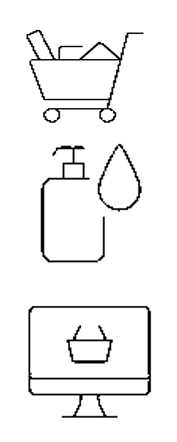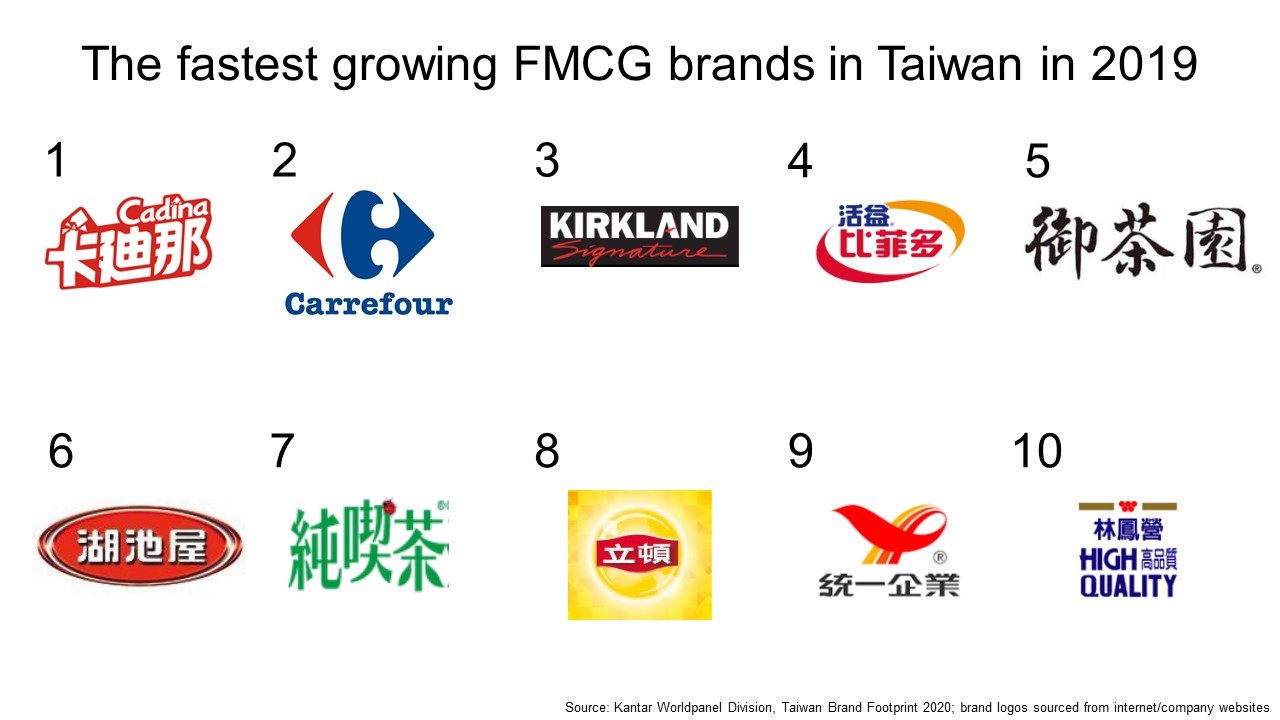Economy & Business
Consumer brands in the era of coronavirus
Health, innovation and convenience are the key themes for success
By Mike Jewell

2020 is the most extraordinary of years. The coronavirus pandemic is reshaping economies all over the world and I defy anyone to predict accurately when we will arrive at that point where we can say that the crisis is over and normality, in whatever form it takes, has returned. The entire global society has been affected and our attitudes and everyday behaviour reframed. Purchasing patterns have changed, some categories and brands have benefitted, others have suffered, but will things get back to the way they were before or will all or some of the changes become permanent?
The Worldpanel division of leading research company Kantar has recently published its annual Brand Footprint analysis, which reveals how consumers around the world are buying fast-moving consumer goods (FMCG) brands and what opportunities exist for brands to improve their positions. Kantar looks at what happened in 2019 and, against that backdrop, has also identified the trends that have become evident since the onset of the crisis.
In Kantar’s view, it is still too early to make any firm conclusions about the long-term impact Covid-19 will have on consumer preferences and behaviour. Care must be taken when looking at current patterns, since there is always a tendency to overestimate the short-term effects while underestimating the true structural changes that will be revealed over time.
Currently, there are three principal trends being observed in almost every country (Kantar’s Brand Footprint covers 52 countries):
 |
People are shopping less often, but buying more per visit. Consumers' personal care routines have changed, or been paused, driven by fewer social interactions. E-commerce has exploded and is competing strongly with bricks-and-mortar stores; and home delivery is replacing out-of-home consumption occasions. |
One further major influence on household purchasing is rising concern over personal financial circumstances, particularly as the prospect of the pandemic taking more rather than less time to resolve becomes more likely. Covid-19 has had a profound impact on shoppers’ livelihoods, with millions worldwide being pushed into poverty and the outlook remains uncertain, even for those who are able to keep their heads above water. Consumers will be more careful with their expenditure and heightened price sensitivity may lead to more bargain hunting, potentially impacting the trend towards premiumisation which had been growing across Asia.
The initial effect of the onset of the pandemic across the globe, with the government-imposed lockdowns in many countries and self-imposed behaviour changes such as we have seen here in Taiwan, was a boost for the FMCG sector in the main and for many manufacturers and retailers operating within it. In Taiwan, Kantar observed 4.6% annual growth in the first quarter this year and, although the second quarter was tougher, with an overall decline in GDP, FMCG sales remained robust, growing by 2.9%.
However, as behaviour has changed, so has the balance of buying habits and the performance across different product categories has not been uniform. Kantar has pinpointed four broad scenarios facing FMCG brands under the influence of lockdown and/or government advisories:
- Increase in demand directly linked to Covid-19: In this case, categories have grown through a true increase in demand; they tend to be products focused on hygiene, such as handwashing and household cleaners.
- Increase in demand from spending more time at home: These categories have benefitted from occasions transferring from out-of-home to in-home, predominantly health care items and especially foods, such as frozen food, health food, dairy products, quick noodles and instant noodles and cereal drinks.
- Short-term stockpiling: Categories where the products tend to have a long shelf life and remain essential, such as fabric detergent and, of course, toilet paper!
- Reduced consumption at home: These categories have seen a pause or reduction in usage, since they are considered non-essential. In Taiwan there has been a decrease in buying cosmetics and personal care items, as well as alcohol.
It is important to remember that the category patterns described here are strictly related to the early stages of the coronavirus crisis and especially to the period of lockdown or early consumer reaction to the changed circumstances. New patterns will arise as long-term changes are revealed. For now, it is fair to say that we have probably never seen so many people trying something new, be it a new retail channel, new routines (whether in cooking, eating or personal care), or new brands. What we need to do is observe and understand how much, if any, of this behaviour will stick, as the “siege mentality” morphs into acceptance of the “new norm”.
Within categories, individual brands go their different ways, but, while it is hardly surprising that it is easier to grow in an expanding segment, the sheer scale of the disparity between increasing and declining categories is staggering – a brand is five times more likely to grow in an expanding category than in a shrinking one. Nevertheless, it is still possible to be successful in a declining sector, but Kantar notes that it tends to be the biggest brands which are currently winning in all categories in Asia, in line with the global picture. Nearly all leading brands are being chosen at a faster rate than the average category growth rate. Just one example is the wet wipes/tissue category in Taiwan, which has grown by 49% during the Covid-19 period, but the leading brand, KNH anti-bacterial wipes, has jumped by 81%.
Perseverance in times of uncertainty
After reviewing the extraordinary local, regional and global situation in 2020, in the context of where FMCG markets ended up in 2019, Kantar’s Brand Footprint draws the following conclusions.
As the spectre of the pandemic continues to hover above all nations, with no apparent end in sight, it is critical for brands to understand the shift in consumer behaviour and adapt their strategy accordingly.
Given the rise of online shopping, some brands are leveraging the momentum by increasing their digital presence through online touchpoints and social platforms. Even more so, some brands are providing their own home delivery service to expand their reach and meet the consumer need for less human contact.
Brands are also getting creative with their communications, promoting positive messages and meaningful activities to support and engage with consumers. And while digitalisation is massive, brands cannot overlook offline stores. It is important that brands and products are available, accessible, and visible across channels both online and offline, to reach as many shoppers as possible.
It is important that brand owners ask themselves where their category fits in today’s market. They must analyse how the profile of their consumers has changed, as well as the occasions and needs available to drive more relevance within their category. The inevitable economic recession both now and post pandemic will introduce new variables into brand planning, in terms of recognising and adapting brands and offers to continue serving the greater population. Big brands remain big due to penetration and reach. Hence, brands will need to consider if there are any new calibrations that will need to be adopted in the areas of pack and pricing strategy to meet new consumer realities and retain their strength.
Despite the many challenges that Covid-19 has presented across all industries, as long as brands can remain innovative and agile, they have a great chance to create future success in post-lockdown and beyond.
Brand Footprint – the leading performers in 2019
Interestingly, the Covid-driven changes are, in many ways, an extension of some of the trends in consumer behaviour that Kantar identified in its analysis of the pre-Covid environment. In Taiwan and across Asia in 2019, five emerging forces were seen: health, convenience, digitalisation, value for money and diversification.
The increase in health consciousness is particularly evident in Taiwan and encompasses a broad range of considerations - a good diet, exercise, nutrients and supplements, and a strong immune system, among others. Consumers are prioritising health in their product choices across various categories and are looking for products that provide natural ingredients, additional nutrients and guaranteed quality.
Convenience is another rising trend. With such busy lifestyles, consumers want products and services faster and more conveniently. Taiwan’s evolving grocery retail structure, with its plethora of “proximity stores”, is testament to that. Those who are money rich and time poor are ideal targets for brands promoting ready-to-use products and services. Top growing categories that target this trend include meal maker, instant noodles and rice, bottled water, snacks and canned foods.
Regarding digitalisation, mobile and internet usage is endemic in Taiwan as in most of Asia, more so than in other parts of the world. The Asian consumer is the most active and engaged mobile user in the world and Asia is home to a majority of the world’s continuously expanding retail e-commerce market.
In 2019, value for money (as opposed to lowest price) was a key feature of the consumer mindset. Depending on the category, consumers were more willing to spend more for higher quality, looking for brands that they feel balance quality with fair pricing.
And finally, diversification within the market has been on the rise over the years. There are three major clusters of consumers in Asia: young millennials and centennials, working-age consumers and, increasingly, ageing consumers. This is important for brands to recognise because different demographics have different needs, desires, and behaviour, thereby requiring a different approach.
Kantar’s Brand Footprint ranking reveals how consumers in 52 countries are buying 22,900+ different FMCG brands. The ranking comprises five global FMCG sectors – beverages, food, dairy, beauty and personal care, and homecare. All data relate to purchases brought into the home to be used or consumed there.
There is a decision point in every FMCG purchase at which the shopper decides to buy one brand instead of another. The Brand Footprint ranking reveals which brands are winning at that moment of truth, using the proprietary Consumer Reach Points (CRP) measure to quantify a brand’s strength in terms of the number of times it is chosen by shoppers, multiplied by penetration and by the total population size.

Kantar’s data, covering 1.5 billion consumption decisions in Taiwan, produced a very similar ranking in 2019 to 2018, with the same six local brands occupying the top six positions, demonstrating consumer trust in these brands’ quality and loyalty. All six brands are in dairy and, as in many of the markets studied, take the lead due to higher in-home penetration and repeat purchase frequency.
I-Mei is again the top brand, after 7.7 million households (88.9% of all households) took home an I-Mei product an average of 10.1 times in 2019, with its dairy and soy drinks leading the way. The company has maintained a positive reputation for quality, even when part of the Taiwanese food sector came under close scrutiny during food safety scandals in 2013-2014.
The next brands on the list are Kuang Chuan at #2 with 61 million purchases by 6.65 million households and FreshDelight at #3 with 46 million purchases by 5.85 million households.
The first international brand in the ranking is Costco’s Kirkland Signature, at #7 and showing the biggest growth in CRPs in the top ten. This represents a coming of age for own label products, overcoming the traditional belief that own label brands are cheap but poor quality.

Consumers’ increasing acceptance of own label is further highlighted by Carrefour’s own brand, which is the second fastest growing brand, ahead of Kirkland, although both are behind snack brand Cadina, which grew its CRPs by 45%.

In summary, Kantar noted that the FMCG environment was intensively competitive in 2019, but that leading brands tended to outperform the market as a whole, by leveraging the trust that consumers have in their quality, by investing creatively in product innovation and development worked hard to achieve growth as leading brands to expand their visibility and by capitalising on the influence of the most successful retailers. 2020 will be a turning point, as the more agile players respond more effectively to the Covid-19 environment and adapt more rapidly the new growth opportunities presented by the new normal.